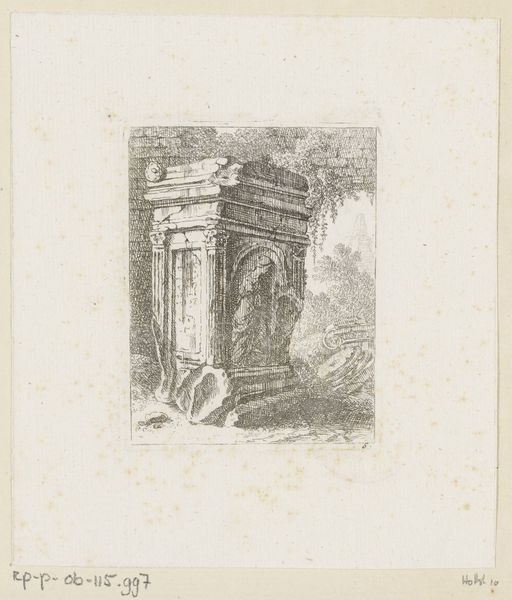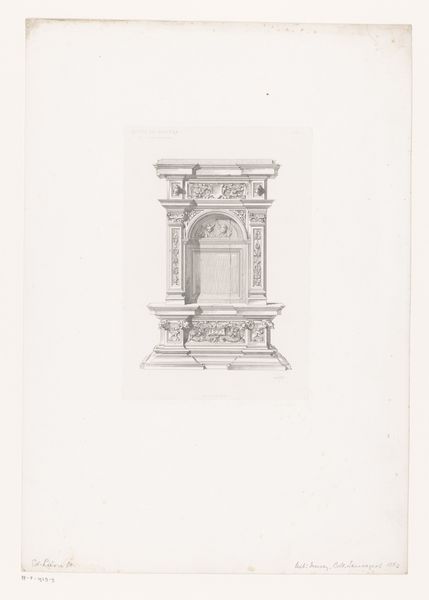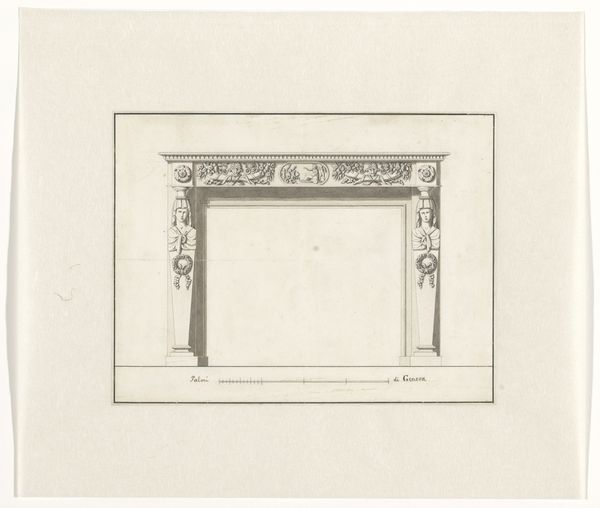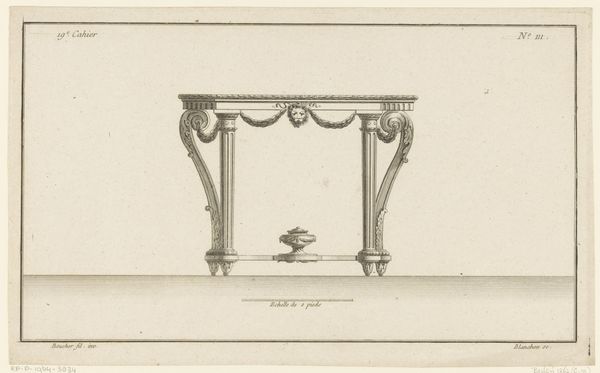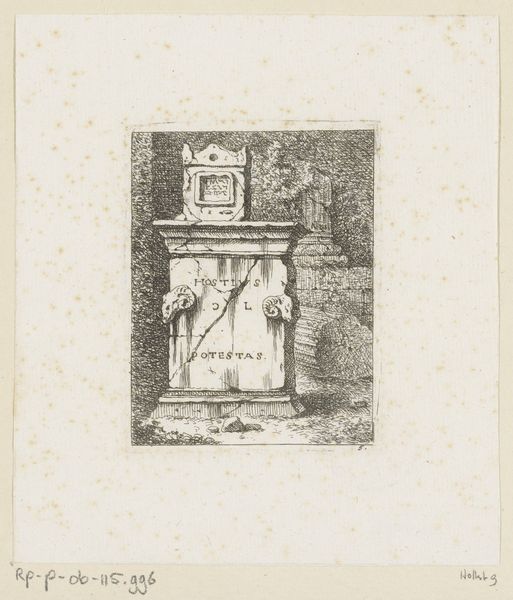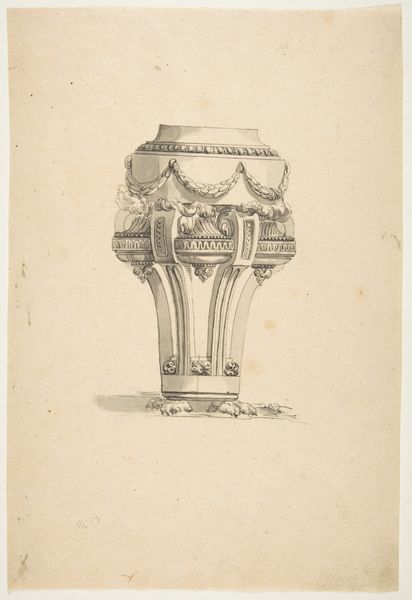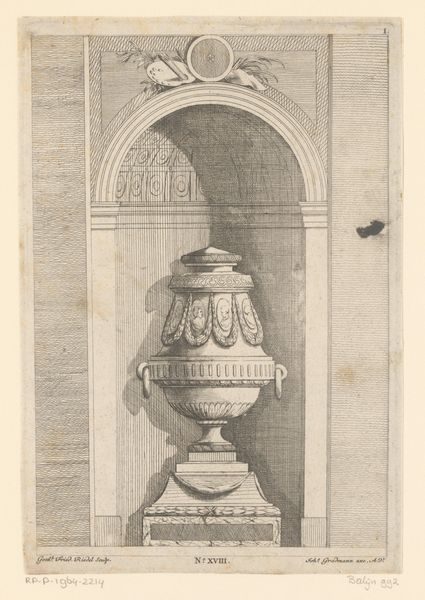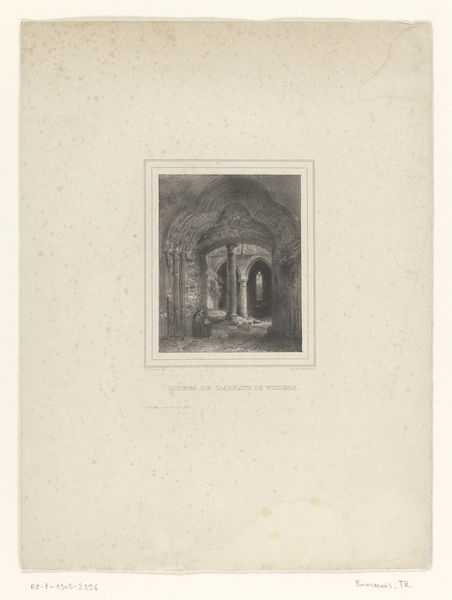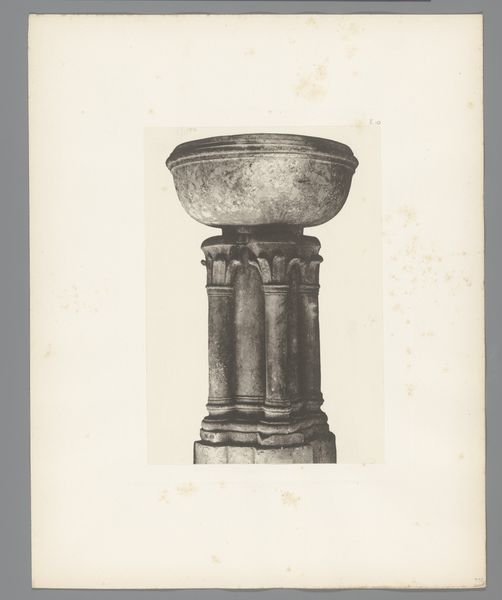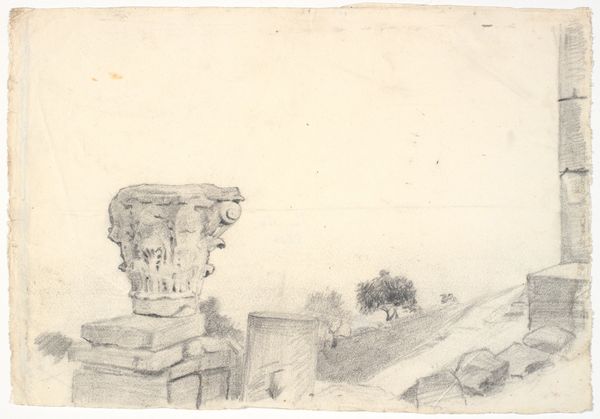
drawing, pencil
#
pencil drawn
#
drawing
#
pencil sketch
#
pencil drawing
#
geometric
#
pencil
#
history-painting
#
academic-art
#
realism
Dimensions: height 231 mm, width 150 mm
Copyright: Rijks Museum: Open Domain
Editor: We're looking at "Doopvont in de kerk van Dendermonde," a pencil drawing from 1838 by Charles Onghena. The delicate lines create a somber mood, highlighting the geometry of the architecture. What do you see in this piece? Curator: The emphasis on line, devoid of color, allows us to truly appreciate Onghena's rendering of form and texture. Consider the cylindrical rendering of the pillars juxtaposed against the relief carving atop the font itself. Where does the artist's hand falter, and where does it excel? Editor: I notice that the depiction of the figures seems less precise than the architectural elements. Was this intentional? Curator: Possibly. Is it not more intriguing to observe how the figures interact as form? Note the variation in shading; it's in these minute differences that we glimpse the hand of the artist. The rendering of light here serves not to illuminate, but to flatten the relief. Does this add to, or detract from, its semiotic potential? Editor: That's interesting. Focusing on form allows me to see the overall composition rather than just individual details. It creates a new understanding of academic art for me. Curator: Precisely. It reminds us to examine the artifice embedded within even the most representational works. Considering form as the primary communicator grants us a greater understanding of both intention and execution. Editor: Thanks, seeing how attention to detail directs us through the piece offers another level of appreciation!
Comments
No comments
Be the first to comment and join the conversation on the ultimate creative platform.
